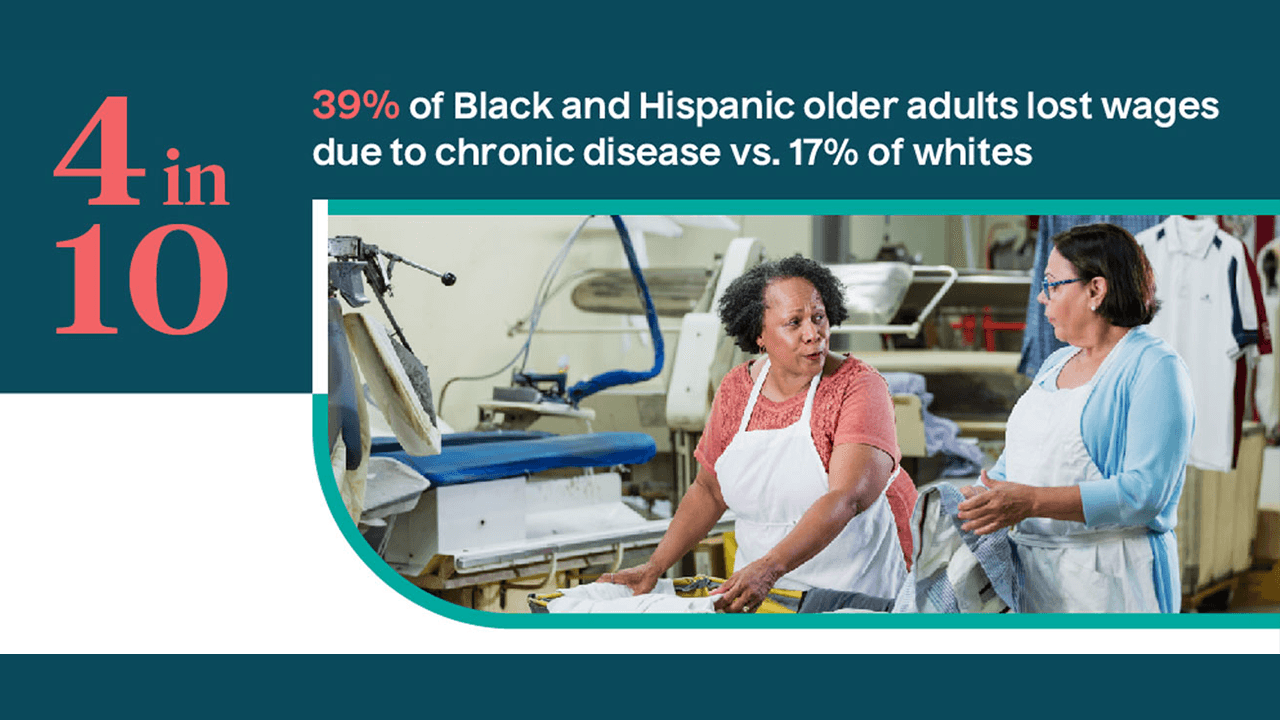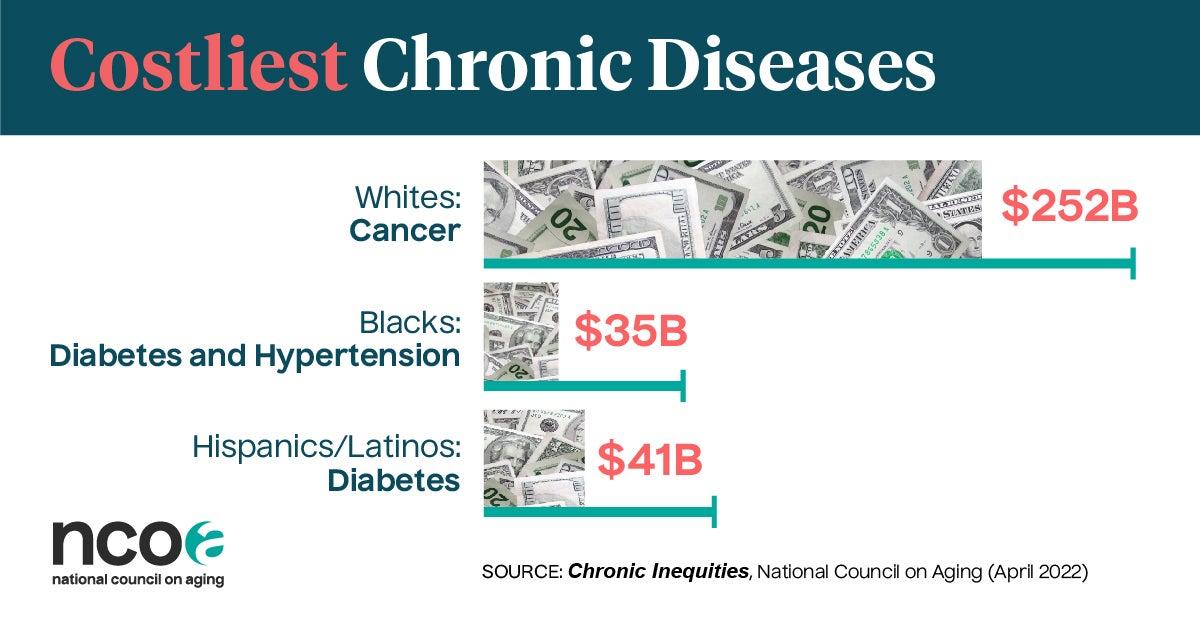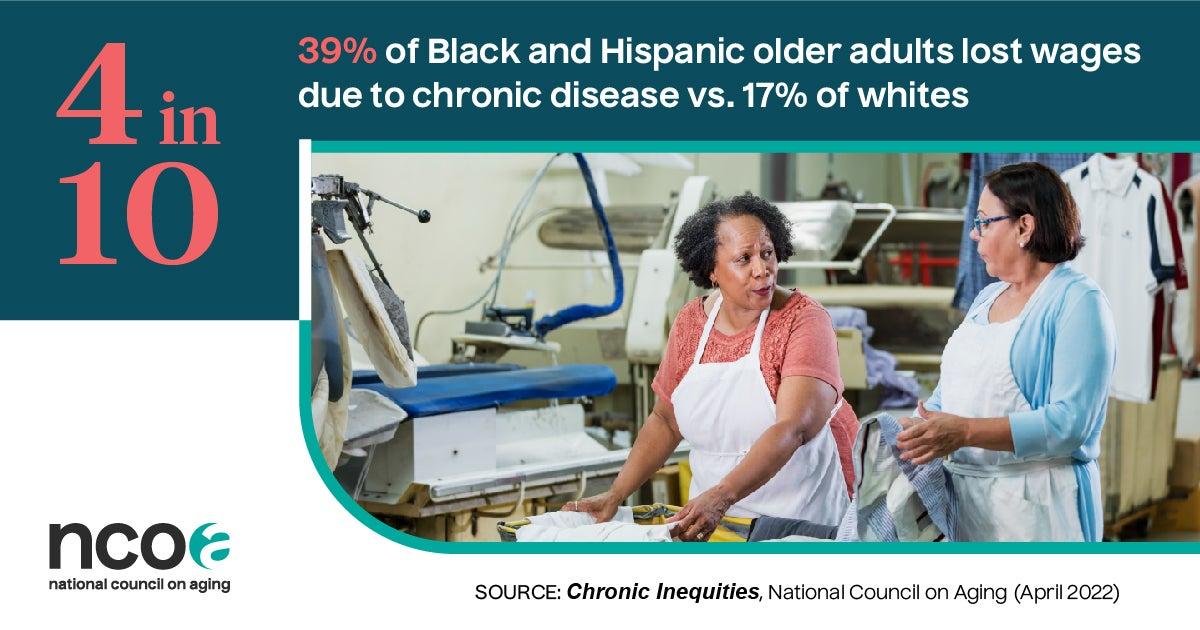The Inequities in the Cost of Chronic Disease: Why It Matters for Older Adults
3 min read

A person’s health directly impacts their wealth—and this connection becomes even more acute as people age. The approach of counting chronic conditions comes the closest to comprehensively understanding a person's overall health, because individuals with greater numbers of chronic conditions tend to be among the sickest in the population. And, as it turns out, women and people of color are more likely to experience higher treatment costs and greater lost wages due to chronic disease. At the same time, these individuals have the fewest financial resources to draw upon, according to new analysis by NCOA and the LeadingAge LTSS Center @ UMass Boston.
When it comes to older adults, those who have more chronic conditions tend to have greater physical limitations, as well as fewer financial resources to cope with higher health care costs.
Below are a few key findings from the April 2022 research:
How to measure the trust cost of chronic disease: Combining treatment and lost wages
The cost of chronic disease is about more than just medical treatment. It also includes lost wages if an older adult can no longer work due to poor health. Examining both costs provides a more complete picture of the true economic impact of chronic disease on older adults.

The costliest chronic diseases for older adults when you add together treatment and lost wages are:
- Alzheimer’s / Dementia – $48,701 per person per year
- Cancer – $30,028 per person per year
- Diabetes – $20,137 per person per year
When factoring in both treatment and lost wages, diabetes, cancer, and hypertension are the costliest chronic diseases across all Americans aged 60+, but there are variations by race/ethnicity.
Who experiences the burden of chronic disease most: Women and people of color
This new analysis shows that financial assets decrease as the cost burden increases. Further, the poverty rate increases as disease cost burden increases. And when it comes to demographics, the financial burden of chronic disease is highest for older women and people of color.

Women
- Older women make up two-thirds of those in the top 25% of the population for highest yearly burden when both treatment costs and lost wages are combined.
- Of those who lost wages due to chronic disease, 56% are older women.
- At the same time, older women also have the lowest household incomes and the highest out-of-pocket medical expenses.
People of Color
- Blacks and Hispanics/Latinos aged 60+ have $4,000 more in average yearly costs due to chronic disease than whites and far lower financial resources to deal with this.
- Older people of color experience 15% higher average yearly treatment costs than whites because they have a greater number of and/or more costly chronic diseases.
- Older people of color experience $3,000 more in average yearly lost wages than whites because they are more likely to experience job interruptions due to health.
- Nearly 40% of Black and Hispanic/Latino older adults lost wages because of their chronic disease compared to 16.6% of whites.
What income levels are affected most: The highest costs are those with the lowest incomes
Individuals experiencing the highest cost burden of chronic disease also have the lowest incomes. Given that lost wage costs reflect lost economic productivity, this pattern is not surprising.
- Older people of color facing high costs have less than half the household income of whites.
- Older Blacks and Hispanics/Latinos who experienced the highest lost wages due to chronic disease have one-third the income of older whites.
- Poverty among older people of color with chronic diseases ranges from 7-16 times higher than whites.
Read the full research briefs:
- Chronic Inequities: Measuring Disease Cost Burden Among Older Adults in the U.S.
- Chronic Inequities: Race/Ethnicity Differences in Disease Cost Burden Among Older Adults in the U.S.

